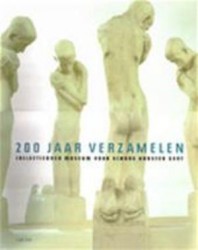
Marijnissen 2000b
“De Hiëronymus Bosch-research” (R.H. Marijnissen) 2000
[in: Arnout Balis e.a. (ed.), 200 Jaar Verzamelen. Collectieboek Museum voor Schone Kunsten Gent. Ludion, Ghent-Amsterdam, 2000, pp. 43-44]
After the Second World War art-historical research has gradually changed, on the one hand because of increasing communication facilities (more information was easier to collect), on the other as a result of the introduction of new scientific methods. The results of these methods are pervading the art-historical world more and more, although for the time being at an exasperatingly slow pace.
These days a professional report on a work of art contains two sections, a technical and a non-technical one, that have to be balanced against each other in order to lead to a new synthesis. Bosch’s oeuvre, not being very large, is very suitable to be subjected so such a systematical research programme. But the collaboration between art historians, lab technicians and owners of works of art still leaves a lot to be desired for.
First the original function of the paintings has to be investigated. The confusion about Bosch’s message is partially due to the fact that the function of his paintings has been studied in an insufficient way. For the research of old Netherlandish masters dendrochronology has become indispensable. A systematical dendrochronological research of the complete Bosch oeuvre would offer a unique opportunity for a critical assessment of the pros and cons of dendrochronology as a method of panel dating.
Infrared reflectography was expected to lead to the distinction of different ‘hands’ and of replicas and copies. In Bosch’s paintings underdrawings have been detected whose style is hardly compatible. This does not have to be disappointing but it raises questions about what we expect from scientific research. X-ray research is very important to collect technical information about a painting. But these photographs should be taken with respect for fixed technical co-ordinates, otherwise the examination results can easily be manipulated.
Pigment identification should be realised without removing any sample material from the painting. Important is also a thorough investigation of the authenticity of the signatures. And a lot of work is still to be done in the field of iconology. Here a special study of late-medieval Latin publications is one of the desiderata.
[explicit 26th December 2006]